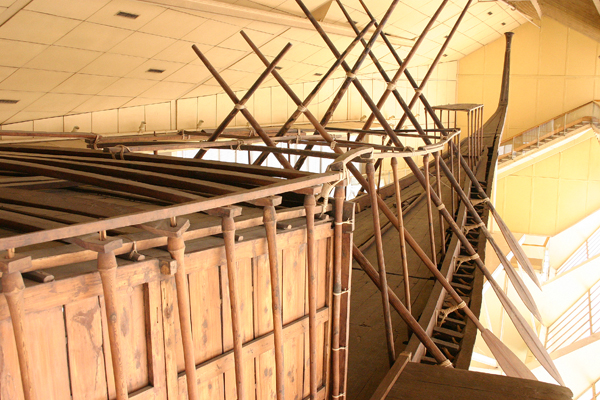|
The Second Solar Boat On Video Display to the Public In 1954,
Egyptian archaeologist Kamal El-Mallakh was clearing debris from the area
just south of the Great Pyramid when he discovered two rectangular pits
covered by huge limestone slabs just outside the pyramid's great enclosure
wall. When the roofing slabs were raised from the eastern pit, the remains
of a dismantled wooden boat were revealed.
The western boat pit, however, has never been excavated and is still covered by 40 massive limestone slabs. In 1987, a team from Waseda University in Japan used an electromagnetic wave scanner to create an image of the pit's contents, which appear to be the pieces of a second wooden boat. It is thought that these two vessels were buried to serve the deified king symbolically in his afterlife, transporting him across the heavens in the company of the sun god. One boat, the manjet, would have carried king and god across the daytime sky, while the other, the mesket, would have been used on their journey through the underworld at night. The mesket's heavy oars would have been used as weapons with which the god would drive off the demons and wild creatures of the dark realm, receiving the adoration and worship of the people in return. Also in 1987,
the Egyptian Antiquities Organization (now the Supreme Council of
Antiquities) and the National Geographic Society inserted a small camera
into the western pit and took the first photographs of the boat inside. At
that time, scholars learned that a small hole had been opened into the pit
when it was discovered, allowing air and insects to enter and damage the
artifacts. The team was able to kill the insects then present, and built a
hangar over the pit to protect it. In 1992, the Waseda University team
conducted further studies to determine the extent of the damage to the
wood – possibilities for its conservation are currently being considered.
|


